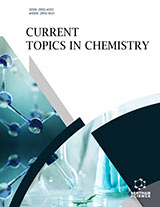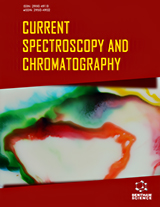Abstract
The ability of nucleic acids (NA) and their components to accumulate at electrode surfaces and electrochemical properties of these species are closely related. This review is devoted to electrochemical stripping techniques applied in NA studies. Cathodic or anodic stripping voltammetry have been used for a highly sensitive determination of nucleobases, nucleosides, nucleotides or acid-hydrolyzed NAs, based on formation of sparingly soluble complexes of the NA constituents with electrochemically generated mercury or copper(I) ions. DNAs, RNAs and their synthetic analogues, either unmodified or labeled with electroactive markers, have been analyzed by adsorptive stripping (AdS) techniques with mercury, mercury film, amalgam and carbon-based electrodes. Strong adsorption of NAs at the electrode surfaces has been utilized in adsorptive transfer stripping (AdTS) techniques. In AdTS, a NA-modified electrode is prepared by adsorptive accumulation of the NA at the electrode surface, followed by transfer into background electrolyte not containing any NA. NA-modified electrodes can be used as simple electrochemical NA sensors. Recent applications of AdS and AdTS in NA microanalysis, in detection of DNA damage as well as in studies of DNA hybridization or DNA-protein interactions are reviewed.
Keywords: Electrochemistry, Stripping, Nucleic acids, DNA, RNA, Peptide nucleic acid, Oligonucleotides, Nucleobases, Nucleosides, Nucleotides
Current Analytical Chemistry
Title: Electrochemical Stripping Techniques in Analysis of Nucleic Acids and their Constituents
Volume: 4 Issue: 3
Author(s): Miroslav Fojta, Frantisek Jelen, Ludek Havran and Emil Palecek
Affiliation:
Keywords: Electrochemistry, Stripping, Nucleic acids, DNA, RNA, Peptide nucleic acid, Oligonucleotides, Nucleobases, Nucleosides, Nucleotides
Abstract: The ability of nucleic acids (NA) and their components to accumulate at electrode surfaces and electrochemical properties of these species are closely related. This review is devoted to electrochemical stripping techniques applied in NA studies. Cathodic or anodic stripping voltammetry have been used for a highly sensitive determination of nucleobases, nucleosides, nucleotides or acid-hydrolyzed NAs, based on formation of sparingly soluble complexes of the NA constituents with electrochemically generated mercury or copper(I) ions. DNAs, RNAs and their synthetic analogues, either unmodified or labeled with electroactive markers, have been analyzed by adsorptive stripping (AdS) techniques with mercury, mercury film, amalgam and carbon-based electrodes. Strong adsorption of NAs at the electrode surfaces has been utilized in adsorptive transfer stripping (AdTS) techniques. In AdTS, a NA-modified electrode is prepared by adsorptive accumulation of the NA at the electrode surface, followed by transfer into background electrolyte not containing any NA. NA-modified electrodes can be used as simple electrochemical NA sensors. Recent applications of AdS and AdTS in NA microanalysis, in detection of DNA damage as well as in studies of DNA hybridization or DNA-protein interactions are reviewed.
Export Options
About this article
Cite this article as:
Fojta Miroslav, Jelen Frantisek, Havran Ludek and Palecek Emil, Electrochemical Stripping Techniques in Analysis of Nucleic Acids and their Constituents, Current Analytical Chemistry 2008; 4 (3) . https://dx.doi.org/10.2174/157341108784911415
| DOI https://dx.doi.org/10.2174/157341108784911415 |
Print ISSN 1573-4110 |
| Publisher Name Bentham Science Publisher |
Online ISSN 1875-6727 |
 3
3
- Author Guidelines
- Bentham Author Support Services (BASS)
- Graphical Abstracts
- Fabricating and Stating False Information
- Research Misconduct
- Post Publication Discussions and Corrections
- Publishing Ethics and Rectitude
- Increase Visibility of Your Article
- Archiving Policies
- Peer Review Workflow
- Order Your Article Before Print
- Promote Your Article
- Manuscript Transfer Facility
- Editorial Policies
- Allegations from Whistleblowers
- Announcements


























